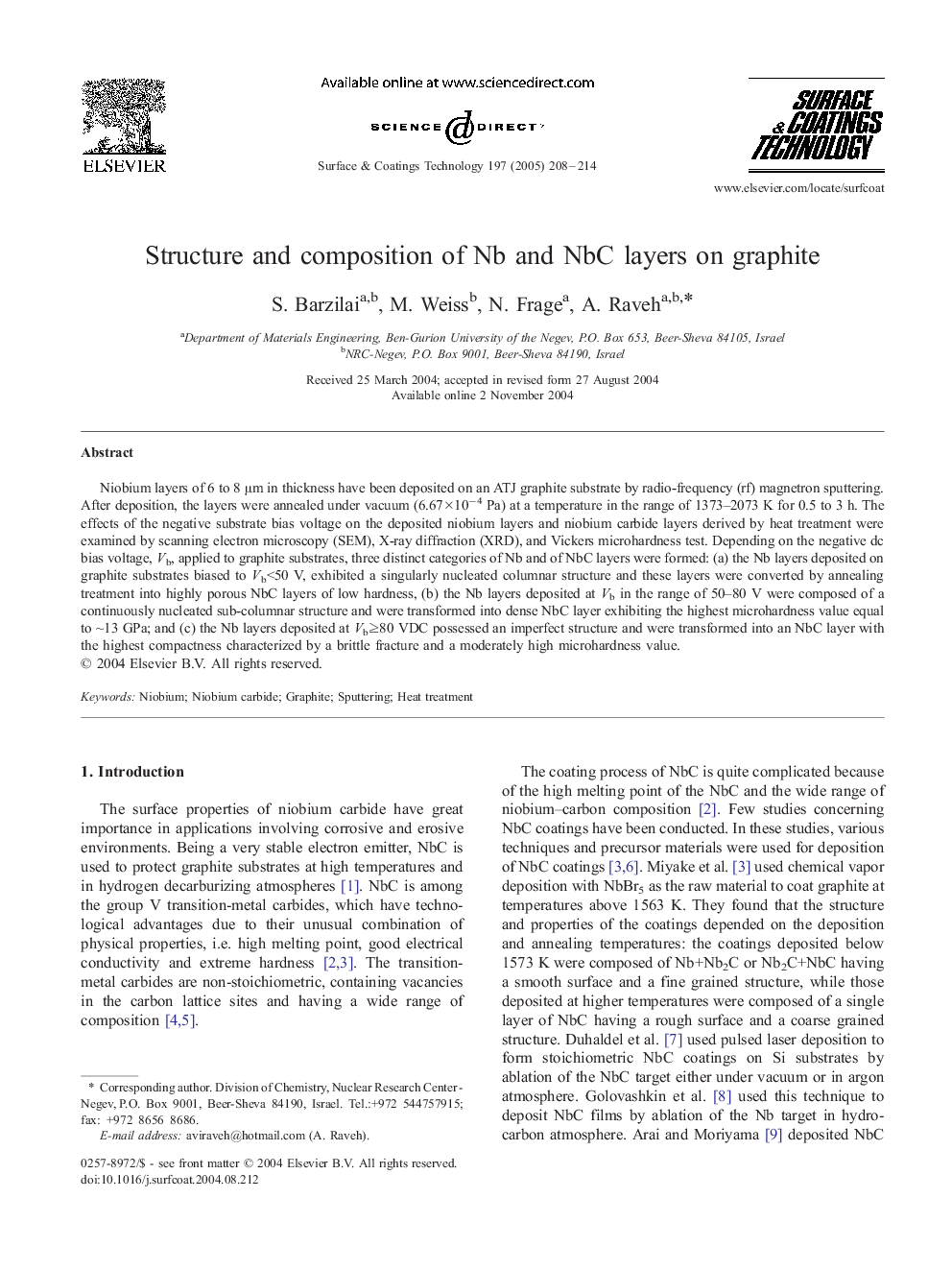| Article ID | Journal | Published Year | Pages | File Type |
|---|---|---|---|---|
| 9809631 | Surface and Coatings Technology | 2005 | 7 Pages |
Abstract
Niobium layers of 6 to 8 μm in thickness have been deposited on an ATJ graphite substrate by radio-frequency (rf) magnetron sputtering. After deposition, the layers were annealed under vacuum (6.67Ã10â4 Pa) at a temperature in the range of 1373-2073 K for 0.5 to 3 h. The effects of the negative substrate bias voltage on the deposited niobium layers and niobium carbide layers derived by heat treatment were examined by scanning electron microscopy (SEM), X-ray diffraction (XRD), and Vickers microhardness test. Depending on the negative dc bias voltage, Vb, applied to graphite substrates, three distinct categories of Nb and of NbC layers were formed: (a) the Nb layers deposited on graphite substrates biased to Vb<50 V, exhibited a singularly nucleated columnar structure and these layers were converted by annealing treatment into highly porous NbC layers of low hardness, (b) the Nb layers deposited at Vb in the range of 50-80 V were composed of a continuously nucleated sub-columnar structure and were transformed into dense NbC layer exhibiting the highest microhardness value equal to â¼13 GPa; and (c) the Nb layers deposited at Vbâ¥80 VDC possessed an imperfect structure and were transformed into an NbC layer with the highest compactness characterized by a brittle fracture and a moderately high microhardness value.
Related Topics
Physical Sciences and Engineering
Materials Science
Nanotechnology
Authors
S. Barzilai, M. Weiss, N. Frage, A. Raveh,
